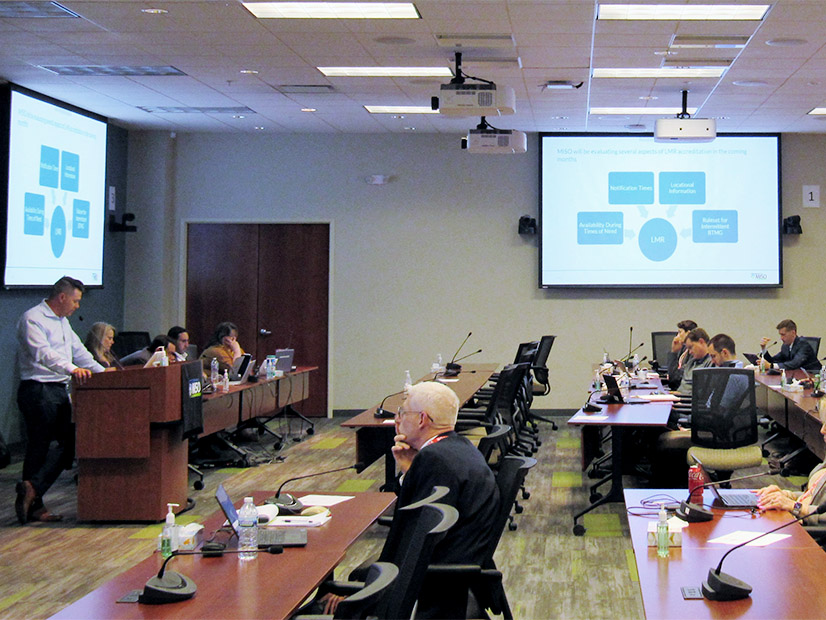CARMEL, Ind. — MISO said it will limit when some resources can use an emergency commitment status outside of emergency conditions, hoping to prod a more available resource fleet.
The restriction is poised to mostly affect units designated to meet the grid operator’s resource adequacy requirements. Currently, such resources can use an emergency commitment status in the energy markets, making their entire output unavailable unless there’s a generation emergency. The emergency commitments don’t affect the resources’ capacity credits. (See MISO Moves to Restrict Emergency Commitments.)
MISO market design adviser Dustin Grethen said the proposal will allow the RTO’s operators to deploy units designated for resource adequacy requirements in anticipation of tight conditions, much like MISO’s registered load-modifying resources.
“Operators are counting every megawatt when they are tracking a potential shortfall of needed capacity,” Grethen said during a Resource Adequacy Subcommittee meeting Wednesday.
MISO reported that during the 2020-21 planning year, approximately 22 GW of resources used the emergency-only commitment status about 20% of the time.
Grethen said MISO will allow emergency commitment status’s use under four conditions. He said the grid operator is proposing three conditions where a unit can use the status without first seeking permission from the Independent Market Monitor:
- when the unit is at its permit limit, where its top range can only be accessed in a declared emergency;
- when the unit is experiencing a “severe” energy limit, such as a fuel shortage, that keeps the unit from responding to capacity emergency conditions; or
- in situations where operating the unit would go against “good utility practice” because the unit risks damage if it operates under high temperatures, high pressure or vibrations, or leaks or cracks in equipment.
MISO is also proposing a “catch-all” condition, where a unit can use the status if it consults with and receives permission from the IMM ahead of time, or while a limiting factor is occurring.
Grethen said MISO wanted a “catch-all” category because the three conditions won’t likely cover all scenarios where a unit needs to use the emergency commitment status.
Stakeholders have said that a unit sometimes uses an emergency-only status for inspections, tours, testing, quick maintenance or because of emissions limits.
MISO wants the changes enacted in time for the 2024-25 planning year.




